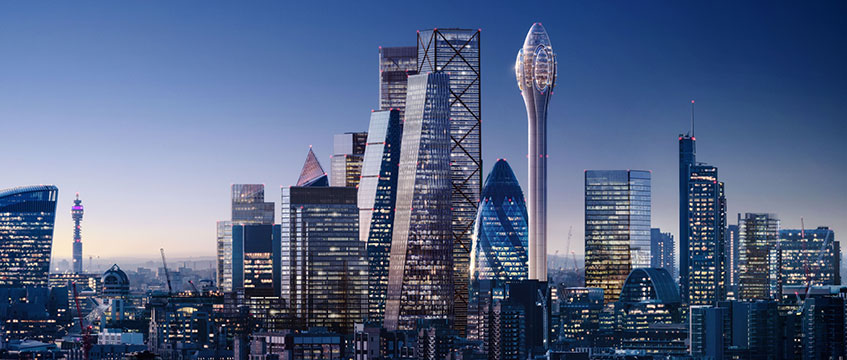Few would say they want to live somewhere ugly. Most would likely also agree that new development should strive to deliver beautiful places.
So it’s easy to find the positives in the government embracing the need for beauty in new development so enthusiastically, and repeatedly ratcheting up its importance in the planning regime.
But is the position really that simple? Could this push for beauty have more ominous consequences?
Step by giant step
Design has always played an important role in the determination of planning applications, and was one of the “core planning principles” in the original National Planning Policy Framework.
However, that document cautioned against design requirements imposing “architectural styles or particular tastes”, or stifling innovation.
It also recognised that securing high quality and inclusive design “goes beyond aesthetic considerations”.
Consideration of beauty, though included, was largely constrained to factors associated with natural features.
In the 2020 Planning for the Future white paper, the spotlight on design intensified, and particular attention was placed on beauty.
The drive for “beautiful and sustainable places” led to proposed reforms requiring local design codes, and the headline-grabbing “fast-track for beauty”.
Notwithstanding protestations about the subjective nature of beauty, and the inherent risk of it and matters of aesthetic design driving planning decisions, changes were made in July 2021 to the NPPF, requiring local planning authorities to ensure appropriate tools were being used to secure “beautiful homes”, and emphasising the role of design guides in helping to create beautiful and sustainable places.
As well as requiring LPAs to establish design guides and codes consistent with the principles in the National Design Guide and National Model Design Code, the revised NPPF:
- refreshed and added to the criteria for good design, setting out six requirements which demonstrate this; and
- established a decision-making framework confirming that development which is not well designed should be refused, especially where it fails to reflect local design policies and government guidance on design, but conversely, significant weight should be attached to development which reflects local design polices and government guidance, or outstanding or innovative designs which promise high levels of sustainability or help raise the standard of design generally in the area, so long as they fit in with the overall form and layout of their surroundings.
Beauty in action
It was not long until we started to see decisions applying this new focus on design. Key talking points included:
- Westferry Printworks – where a failure to respond to the existing character and context of the area was, among other things, a reason for refusal.
- The “Tulip” in the City of London – where the design “as a whole” was held to carry significant weight against the proposal.
- North Finchley Homebase – even though there were other policy reasons in favour of granting permission, such as the delivery of affordable housing, that was not enough to outweigh deficient design.
- Edith Summerskill House – the “exemplary” design was afforded significant weight, tipping the planning balance in favour of grant.
- Bow River Village – quite good design is not good enough.
This growing assortment of decisions makes it clear that the importance of design, in an aesthetic sense, is becoming firmly embedded in the system.
With the delivery of social benefits not necessarily being enough to justify poor design, function will not always trump form.
However, these decisions also start to show that the concerns of many in the industry about the subjective nature of beauty were not unfounded.
Where the aesthetics of a scheme are not pleasing to the decision-maker, even old faithful benefits, like affordable housing, may no longer be enough to tip the balance in favour of the grant of permission.
More to come?
Despite this, the government wants to go further still.
The most recent consultation on changes to the NPPF, published just before Christmas, included a number of proposals to not just emphasise the importance of design codes, but to further entrench the importance of beauty in the planning system, for example by requiring strategic policies to support beauty and placemaking.
Many have been critical of this. Not because as an industry we want the freedom to erect ugly buildings, but because beauty really is in the eye of the beholder.
Even broader design, which can to a much greater extent be assessed as good or bad, depending on whether certain outcomes are achieved, puts a lot of emphasis on the personal views of the decision-maker.
Beauty is an inherently subjective matter, and something that can easily change over time.
And with subjectivity comes uncertainty, which is the last thing that developers and investors want, especially at the moment.
Not only is there uncertainty due to the huge scope for disagreement about beauty – as demonstrated by the recent Berkeley Homes scheme where (notwithstanding the fact that it was not actually a reason for refusal) there was a clear differing of opinion between the LPA (and most others) and the secretary of state as to the visual quality of the scheme – but there is also the potential for abuse.
LPAs could use beauty (or the apparent lack thereof) as a ready-made reason for refusal which, in most cases, will be very difficult to refute. Recent references to a potential “placemaking matrix”, do little to calm these fears.
With all of this in mind, only the brave may be willing to push architectural boundaries, and take their chances with the tastes of a planning committee or Michael Gove (or whoever may be the next secretary of state).
Despite perceptions to the contrary, most in the development industry feel just as passionately as Gove about delivering amazing places to live and work. Here’s hoping that the quest to deliver beautiful places doesn’t end up stifling our ability to deliver them.
Hannah Quarterman is a partner and head of planning at Hogan Lovells








